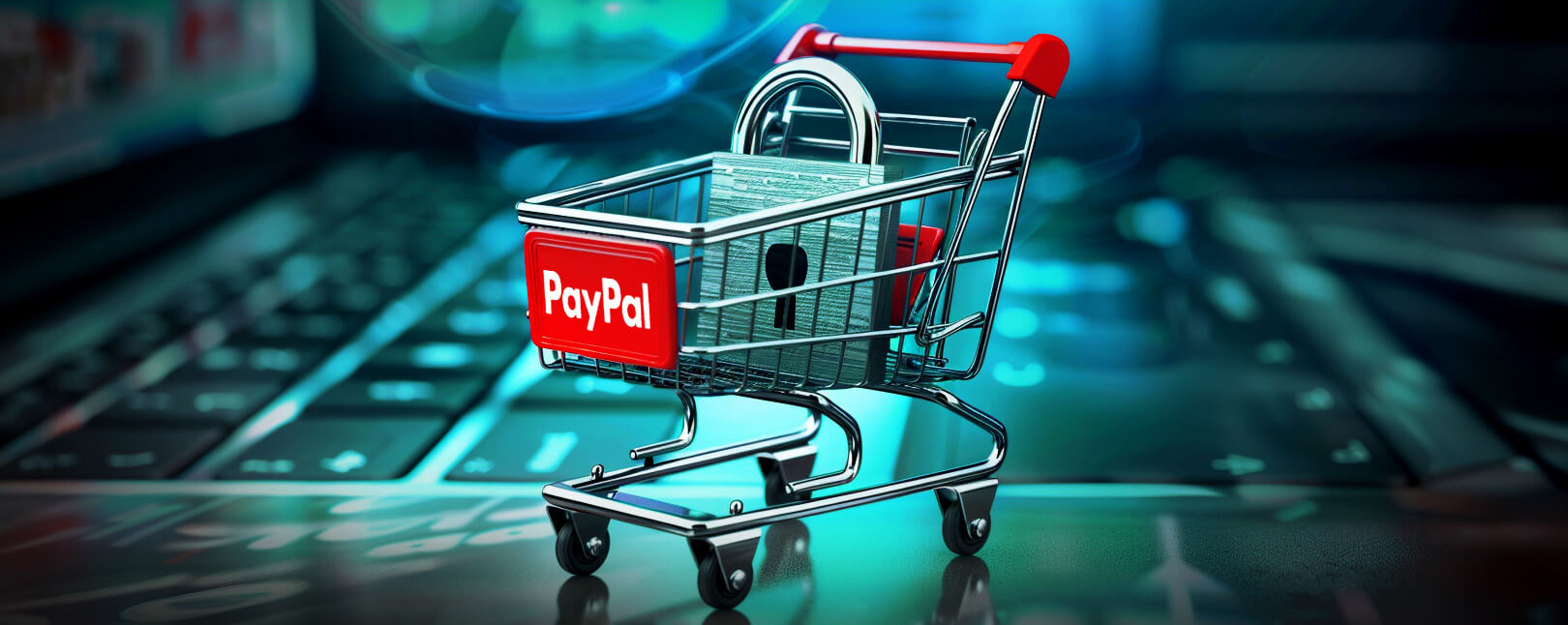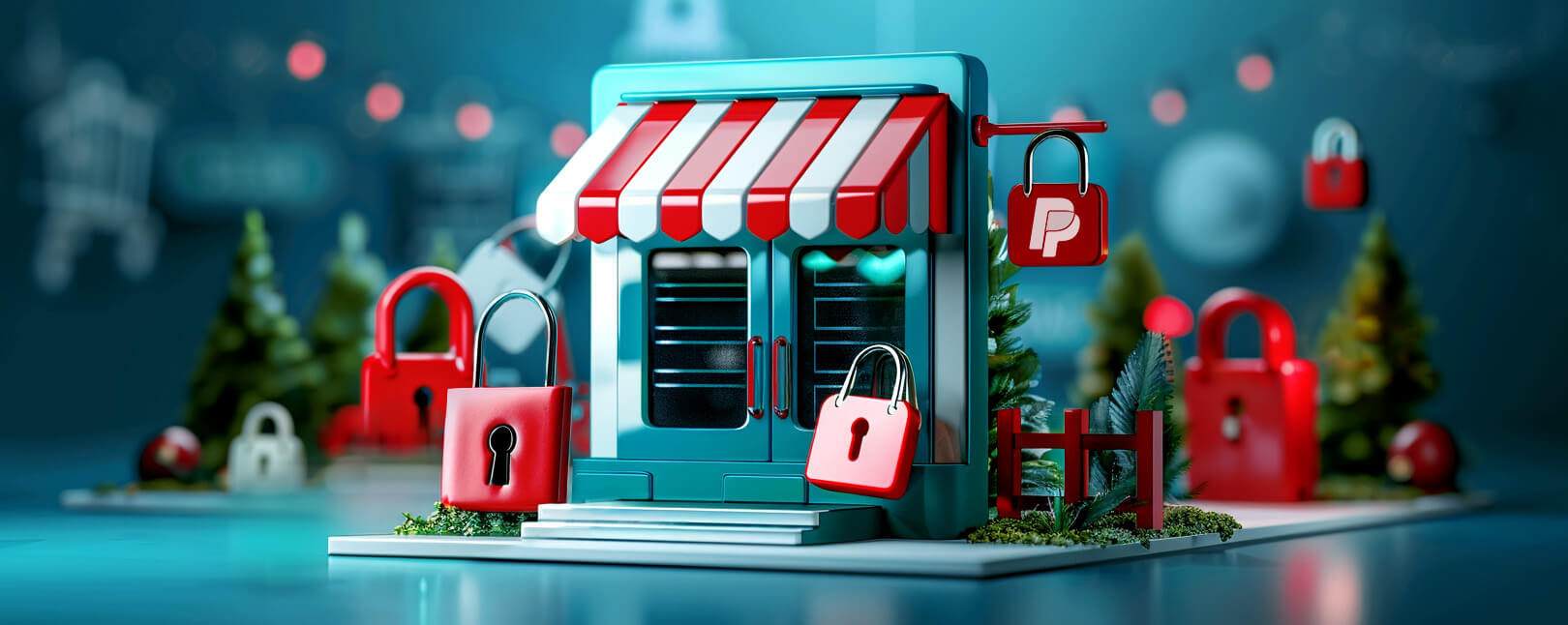20 Simple Ways to Identify & Prevent PayPal Scam Emails
PayPal is a household name at this point.
The platform has close to 350 million active users, making it an appealing choice for merchants to adopt as a payment option. It's important to note, however, that those impressive user statistics also catch the eye of scammers. As a result, PayPal email scams are on the rise.
Today, we take a look into one of the most prevalent scams affecting both cardholders and sellers on PayPal. We’ll explore how these scams work, a few red flags to watch out for, and the preventive measures you can take to stop them.
Recommended reading
- eBay Resolution Center: The Guide for Buyers & Sellers
- PayPal Account Limitations? Here’s 5 Ways to Respond.
- PayPal Refund Scams: How to Stop Scams Before It’s Too Late
- PayPal Purchase Protection: What is it & How Does it Work?
- What is PayPal Seller Protection? How Does it Work?
- What is PayPal Chargeback Protection?
What is a PayPal Scam Email?
- PayPal Scam Email
A PayPal email scam is a type of phishing attack by which the attacker sends an email that appears to be from PayPal. The aim is to deceive recipients into revealing sensitive information, such as their PayPal username, password, or financial details.
[noun]/pā • pal • skəm • ē • māl/PayPal email scams usually work by sending fraudulent emails that closely mimic official PayPal communications. Emails often appear to be sent from PayPal, and are presented as account alerts, or are warning you about unauthorized transactions, pending payments, or account verification issues. The scammer urges you to take immediate action due to a purported issue with your account.
Scam PayPal emails usually contain some kind of urgent call to action. The scammer presses you to click a link to “resolve the issue,” or else your account (and any money in the account) will be frozen or seized. These emails usually contain links to fake websites that closely resemble PayPal's official site, though. Once there, you're prompted to input your PayPal login credentials.
Once you do this, the scammer is able to capture your information. The scammer can then gain unauthorized access to your PayPal account to make transactions, transfer funds, or steal your identity.
Scammers may also sell your information on the dark web or use it to target you in more sophisticated scams. To protect yourself, you should always approach unsolicited emails cautiously, and verify their authenticity by visiting the PayPal website. Check your account for official notifications, and never follow links in suspicious emails.
Common PayPal Scam Emails Targeting Consumers
Email scams target a broad range of individuals, from novice internet users to those who consider themselves “tech-savvy.” Even seasoned users can sometimes fall victim, especially if they are rushed or distracted when checking their emails. Although everyone is at risk, those who are not vigilant about online security practices are particularly susceptible.
Fraudsters are crafting increasingly sophisticated tactics to gain unauthorized access to accounts. Common examples include:
It's important to note that PayPal will never ask for sensitive information like your password, Social Security number, or financial information via email. Always scrutinize the sender's email address, check for poor grammar or spelling, and hover over any links to see where they actually lead before clicking.
Common PayPal Scam Emails Targeting Businesses
So far, we’ve focused on PayPal email scams targeting consumers. However, scammers can impersonate PayPal to target businesses, too.
Scammers are acutely aware that merchants are focused on sales and customer service. These activities will divert attention from potential red flags in fraudulent emails. Considering the high volume of transactions and the number of team members who may have access to a merchant's PayPal account, eCommerce is particularly fertile ground for scams.
Here are fives ways in which merchants can be targeted by PayPal email scams:
It doesn’t matter whether you're a small vendor or a large enterprise. Understanding the evolving tactics of these scams is crucial for protecting not just your PayPal account, but your business at large.
Always scrutinize email senders’ addresses. Double-check email content for inconsistencies, and log into your PayPal account directly from your browser to verify any dubious emails.
10 “Red Flags” for PayPal Scam Emails
Knowing PayPal email scams might target you is one thing. Knowing how to spot one when it pops up in your inbox is another thing entirely.
So, what should you be on the lookout for to prevent becoming a victim? Here's a deeper look into some of the common “red flags” to watch for:
Unofficial Email Addresses
A genuine PayPal email will come from an address ending with “@paypal.com.” Any other domain, especially free email services like Gmail or Yahoo, should be an immediate red flag. Always double-check the sender's email address.Generic Greetings
PayPal typically addresses you by your first and last name, as registered on your account. Scammers often use generic greetings like “Dear User” because they don't have access to this specific information. Be skeptical if the greeting is not personalized.Suspicious Links
Before clicking any links in an email, hover your cursor over them to see the destination URL. Legitimate PayPal URLs will start with a “paypal.com” domain. If the URL points to a different website, do not click on it.Grammar & Spelling Errors
Reputable companies like PayPal have dedicated teams to ensure that their communications are error-free. Misspelled words, awkward phrasing, or inconsistent formatting are strong indicators of fraud.Requests for Personal Information
Legitimate services like PayPal will never ask for sensitive information like your password, Social Security number, or credit card details through email. Any email requesting such details should be considered suspicious.High-Pressure Tactics
Scammers often employ scare tactics to create a sense of urgency, threatening account suspension or legal action if you don't act immediately. These high-pressure methods are used to rush you into making mistakes.Attachments in the Email
PayPal will not send unsolicited attachments. Any unexpected file attached to a supposed PayPal email could contain malware designed to compromise your system when downloaded.Mismatched URLs
Sometimes, the text of a hyperlink may read "paypal.com," but hovering over it reveals a different URL. This discrepancy is a strong indicator of a phishing attempt designed to capture your login information.“Too Good to Be True” Offers
Fraudulent emails may offer rewards, cashback, or exclusive deals to entice you into clicking on a link. Always be skeptical of unsolicited offers that seem too good to be true.Inconsistencies in Transactions
If an email references transactions you don't recognize, especially involving significant sums or unfamiliar merchants, treat it as a red flag. Before taking action, verify through your actual PayPal account, not the email link.Always remember that genuine companies like PayPal will never ask for sensitive information via email. If in doubt, contact PayPal's customer service directly to verify any communications you receive.
The more you understand these red flags, the better you'll be at spotting a scam from a mile away.
10 Things to Do if You Receive a PayPal Scam Email
PayPal, like any other payment platform, is susceptible to being used by scammers. Also, it doesn’t matter whether you’re an everyday consumer who shops with PayPal or a merchant who takes PayPal payments; no one is immune to scams.
Knowing exactly what to do is crucial if you find a suspicious email lurking in your inbox. To that end, here are ten best practices you should follow if you receive a suspicious PayPal email:
#1 | Do Not Click or Download
First and foremost, refrain from clicking on any links or downloading attachments in the suspicious email. These could be phishing links designed to steal your personal information or malware that could infect your computer. If you accidentally click a link, do not enter any information on the website it directs you to.
#2 | Forward the Email
PayPal's has a specialized email address for reporting email scams (spoof@paypal.com). Take the initiative to report the scam by forwarding the entire suspicious email to this address. PayPal's experts will analyze the email to improve their security measures.
#3 | Check Your Account
Access your PayPal account by manually typing "https://www.paypal.com" into your web browser's address bar. Do not use any links from the suspicious email to do this. Once logged in, review your recent activity to ensure there are no unauthorized transactions or alterations to your account settings.
#4 | Change Passwords
If there's even a slim chance you've compromised your login credentials, immediately change your PayPal password. Moreover, if you've used the same or similar passwords on other online accounts, change those as well to enhance your overall digital security.
#5 | Enable Two-Factor Authentication (2FA)
Enable two-factor authentication on your PayPal account. This requires you to confirm your identity in two ways, typically something you know (your password) and something you have (your phone). 2FA making unauthorized access substantially more challenging for scammers.
#6 | Report to Authorities
In instances where you've incurred financial loss, or the scam attempt is particularly severe, consider filing a formal complaint with your local police department and other relevant agencies. This not only helps you, but also contributes to broader cybersecurity efforts.
#7 | Educate & Inform
If you're a merchant, educate your employees about these scams to create a more robust first line of defense. Consumers should also inform their circle of family and friends. Raising awareness can prevent others from falling prey to similar scams.
#8 | Monitor Your Accounts
Regular and thorough monitoring of your financial accounts (including PayPal) can help you catch any unauthorized activity early. If you notice anything out of the ordinary, report it to the financial institution immediately.
#9 | Contact Customer Support
If you're ever uncertain about an email's legitimacy, it's always a good idea to reach out to PayPal customer support directly for clarification. Authentic customer support will never mind verifying the details for you.
#10 | Use Security Software
Ensure you have reliable and updated security software installed on your computer. Regular scans for malware and other vulnerabilities can act as another layer of defense, identifying threats before they compromise your system.
Being proactive in your cybersecurity efforts is not just an option for consumers; it's a necessity in today's digital landscape. Arming yourself with this comprehensive guide allows you to protect your assets, reputation, and peace of mind.
Remember, you're not powerless against cybercriminals. Rather, you're taking back control and fortifying your defenses by understanding how to respond effectively to a suspicious PayPal email.
Prevention is the Best Medicine in Business
For business owners, PayPal is an excellent choice for peer-to-peer transactions and online sales. However, PayPal isn't without its flaws.
While promptly reporting PayPal email scams can help resolve a current incident, any reports from sellers tend to be reactions to past incidents. So, what best practices can merchants follow to prevent these scams from happening in the first place? Here are a few tips:
- Enroll in PayPal’s Seller Protection Program to secure compensation for any credit card fraud instances.
- Block or blacklist known fraudsters; they often return to exploit the same merchants.
- Before confirming purchases, thoroughly review shipping and account details and refine your fulfillment processes.
- Measure the success of your strategies using key performance indicators (KPIs).
- Stay vigilant for transactions where customers urgently request changes in shipping destinations.
- For high-value products, always ask for a signature upon delivery.
- Only send products to addresses verified by PayPal during the transaction.
- Be wary of any 'official' PayPal communications requesting personal data or login details.
Lastly, don’t forget that not all PayPal scams are perpetrated by anonymous cybercriminals. Some acts of fraud, like chargeback abuse, for example, are committed by your own customers. If your company is struggling with a high number of chargebacks each month, Chargebacks911 can help. Click below to learn more.
FAQs
Is there a PayPal email scam going on?
Yes. PayPal email scams are relatively common and usually aim to steal sensitive information like passwords or financial details. These fraudulent emails often impersonate PayPal in their design and language, asking you to log in via a link provided to "resolve an issue" or "verify your account." It's crucial to be vigilant and always double-check the sender's email and the website URL before taking any action.
How do I know if an email is really from PayPal?
To confirm an email is genuinely from PayPal, check that the sender's email address ends in “@paypal.com” and not variations like “@paypal.co” or “@secure-paypal.com.” Look for grammatical errors, poor formatting, or generic greetings, as these are often signs of a scam. For the utmost assurance, log into your PayPal account directly through your browser and check for any notifications or messages there rather than clicking on any links in the email.
How can you tell a fake email?
Fake PayPal emails often come from suspicious email addresses that don't end in “@paypal.com.” They may also contain poor grammar or misspellings. These emails usually urge quick action, such as claiming your account will be locked unless you verify your information immediately through a provided link. Always be cautious and verify any such claims by logging into your PayPal account directly through your web browser, not by clicking on links in the email.
What does a phishing email look like?
A PayPal phishing email typically impersonates the design and language of official PayPal communications but often has a sender email that doesn't end in “@paypal.com.” The email usually contains urgent or alarming messages, asking you to “verify your account” or “resolve a problem” by clicking on a provided link. These links lead to fake websites designed to capture your login credentials or other sensitive information.














